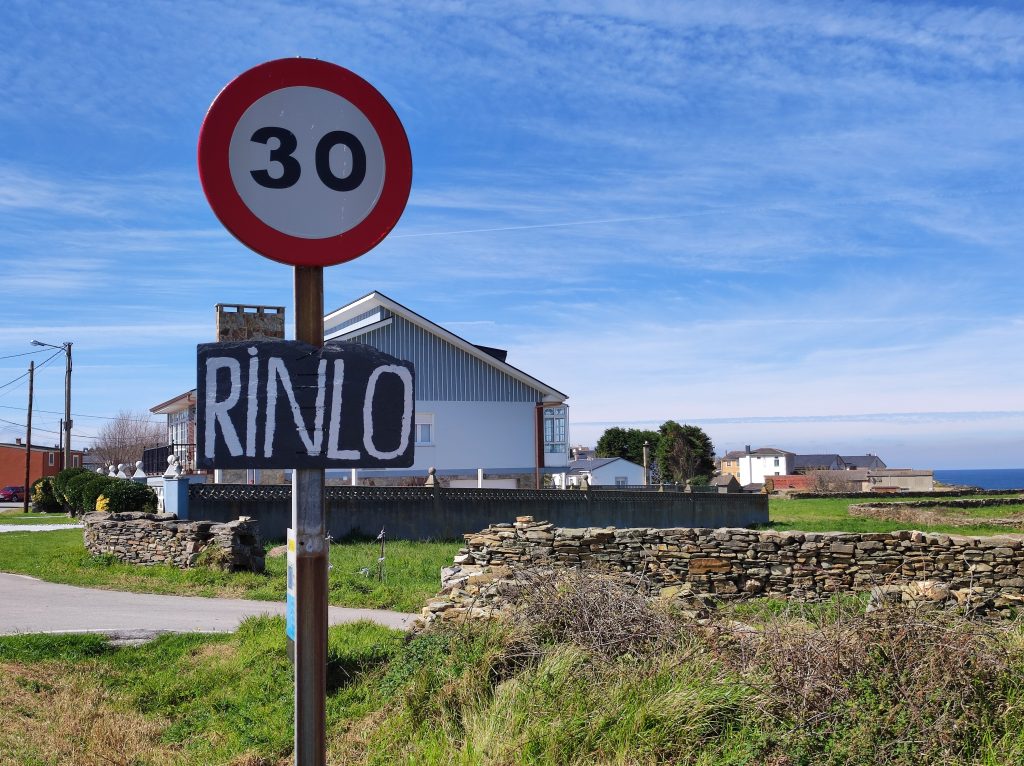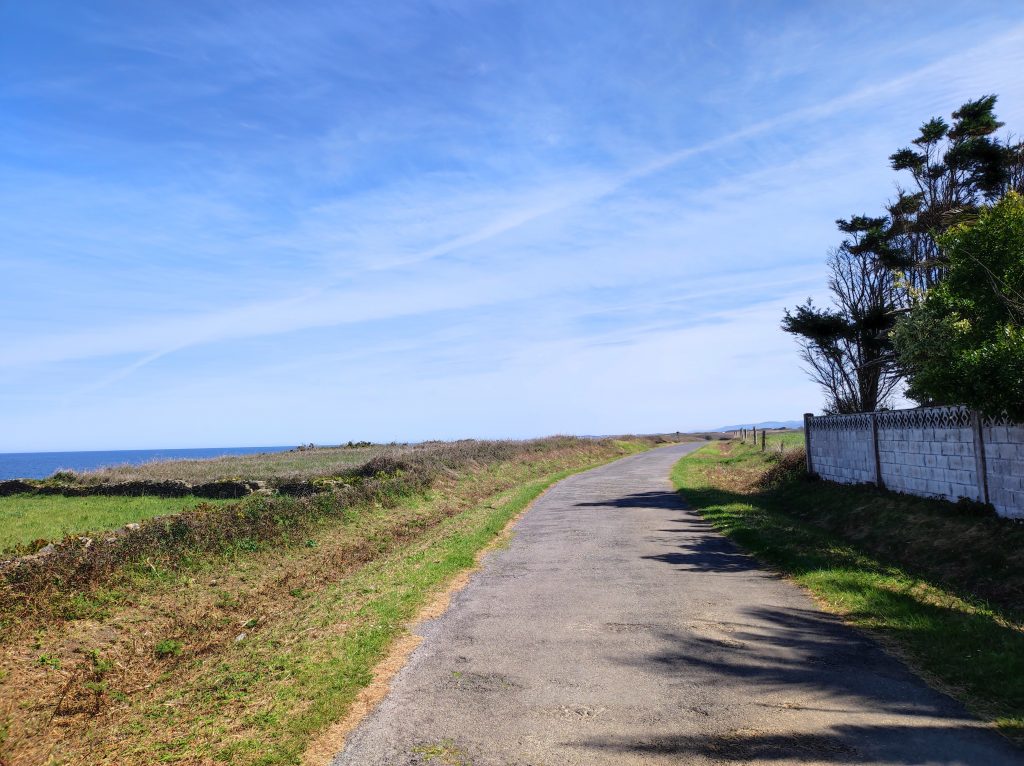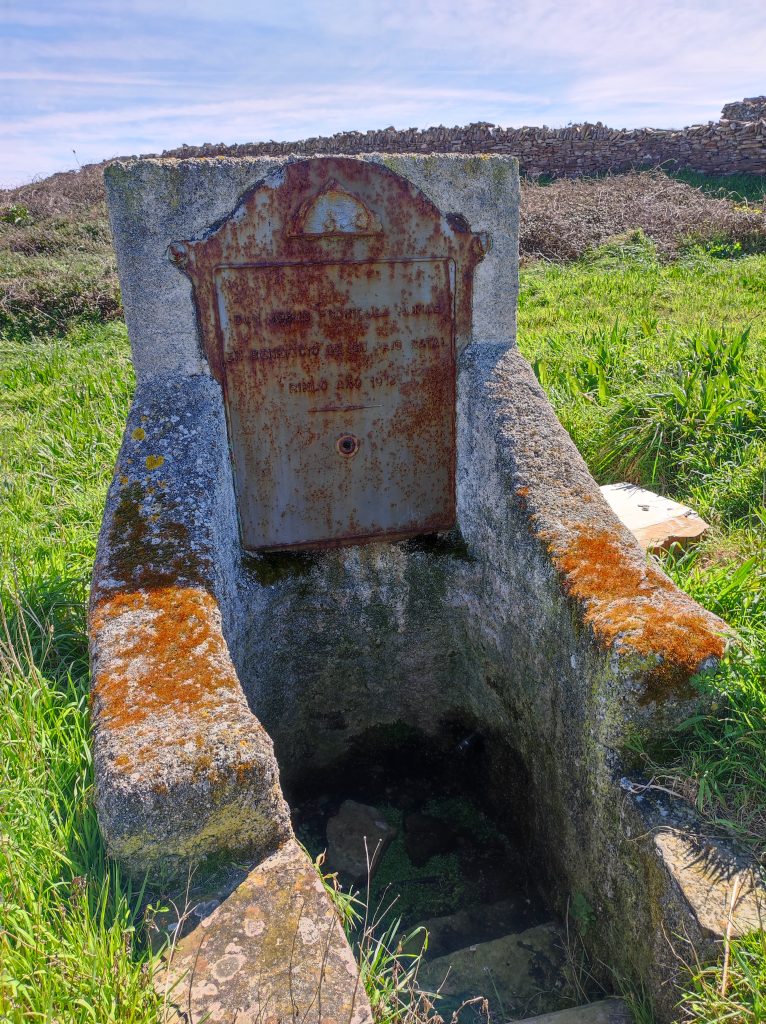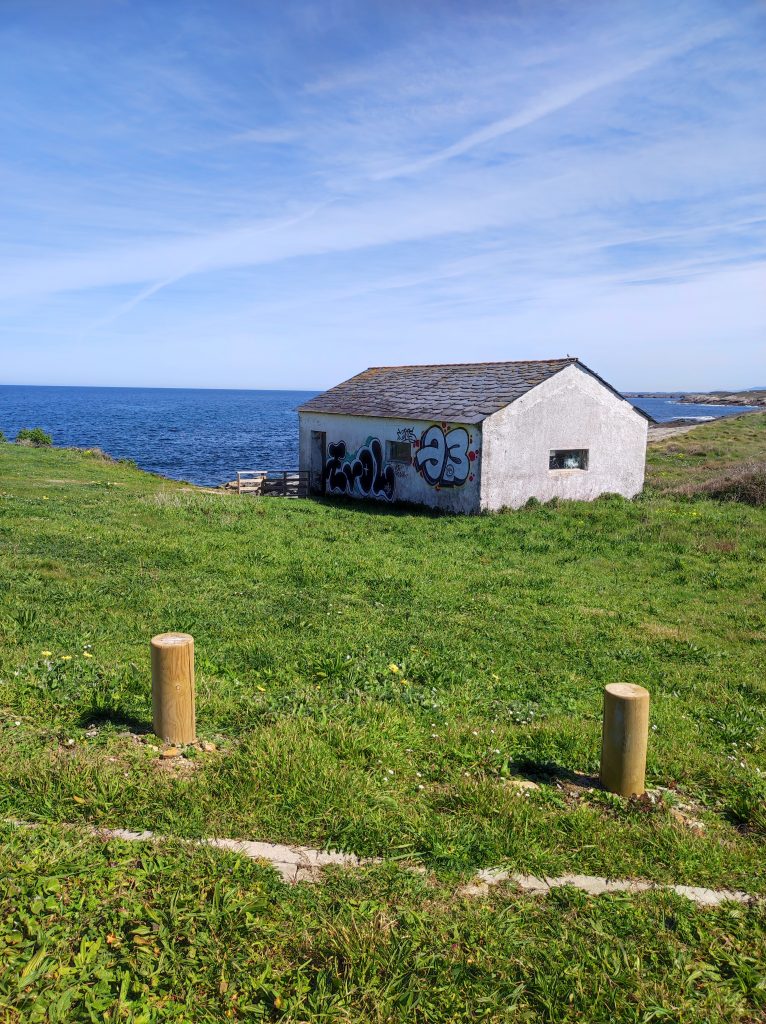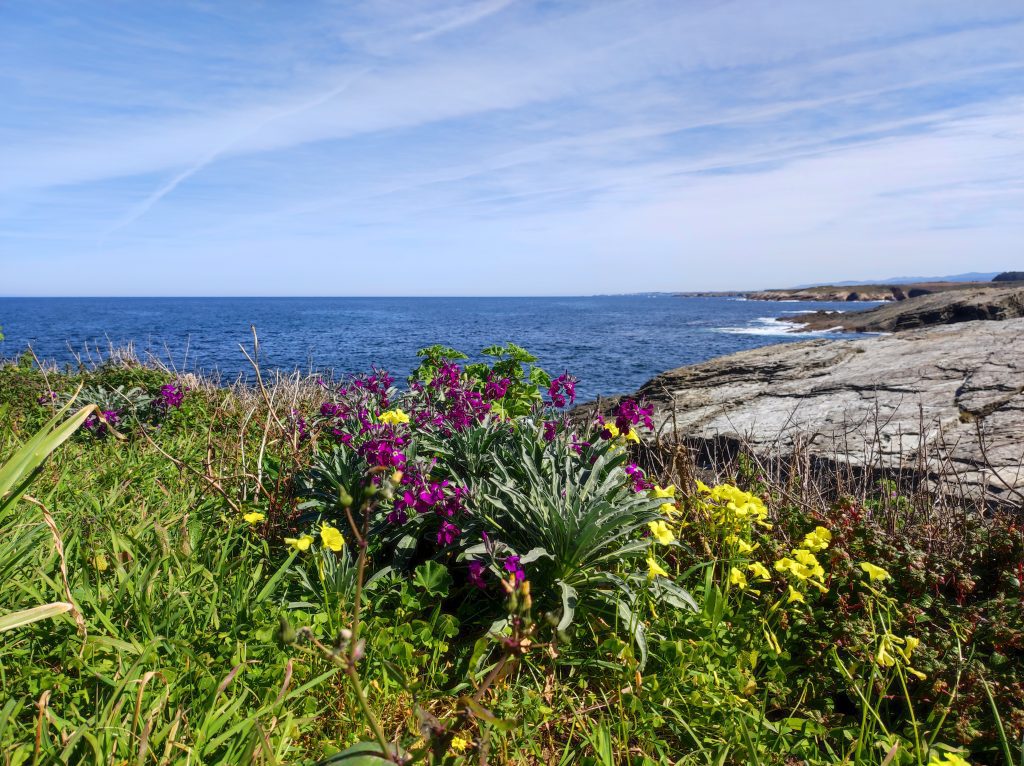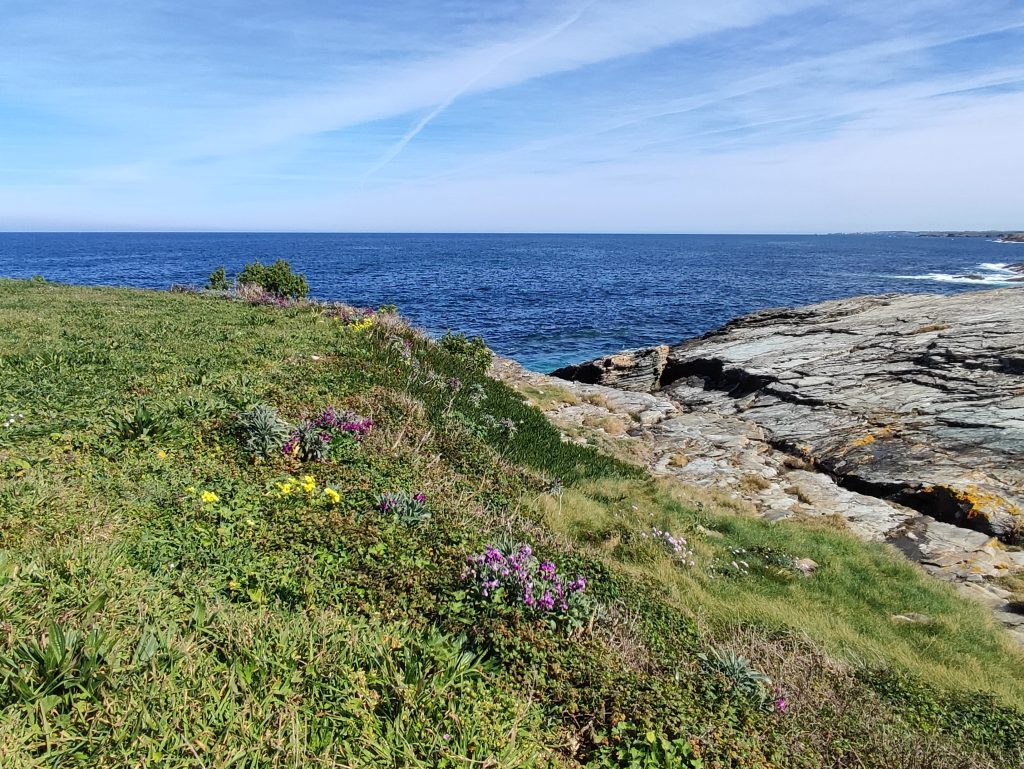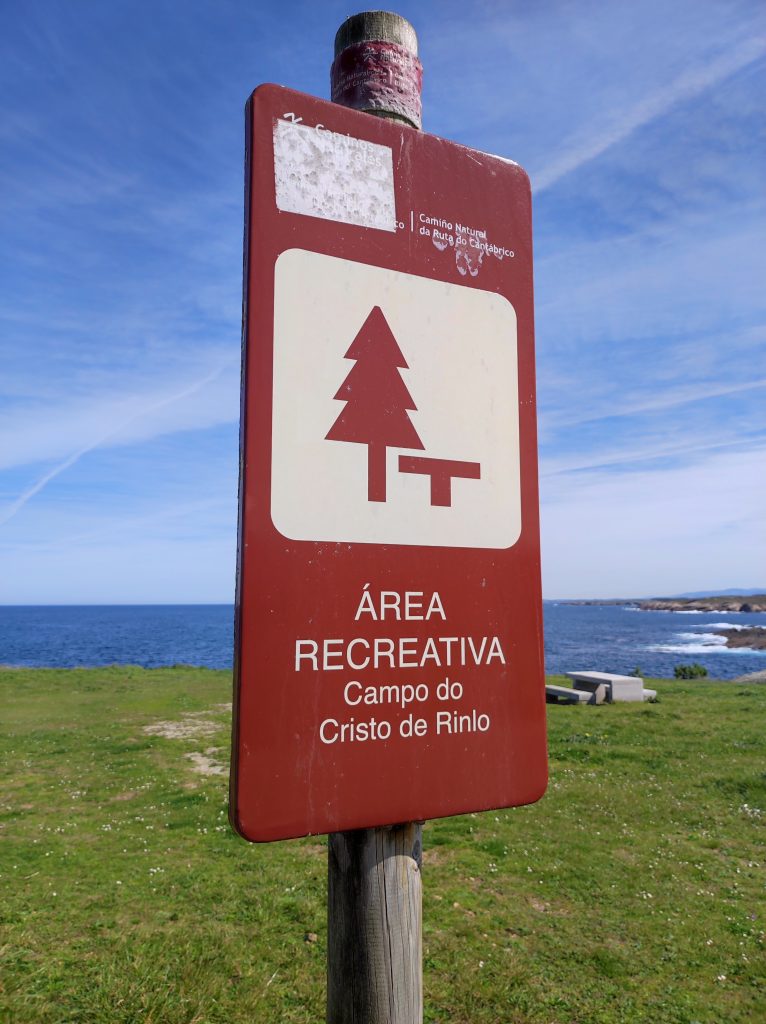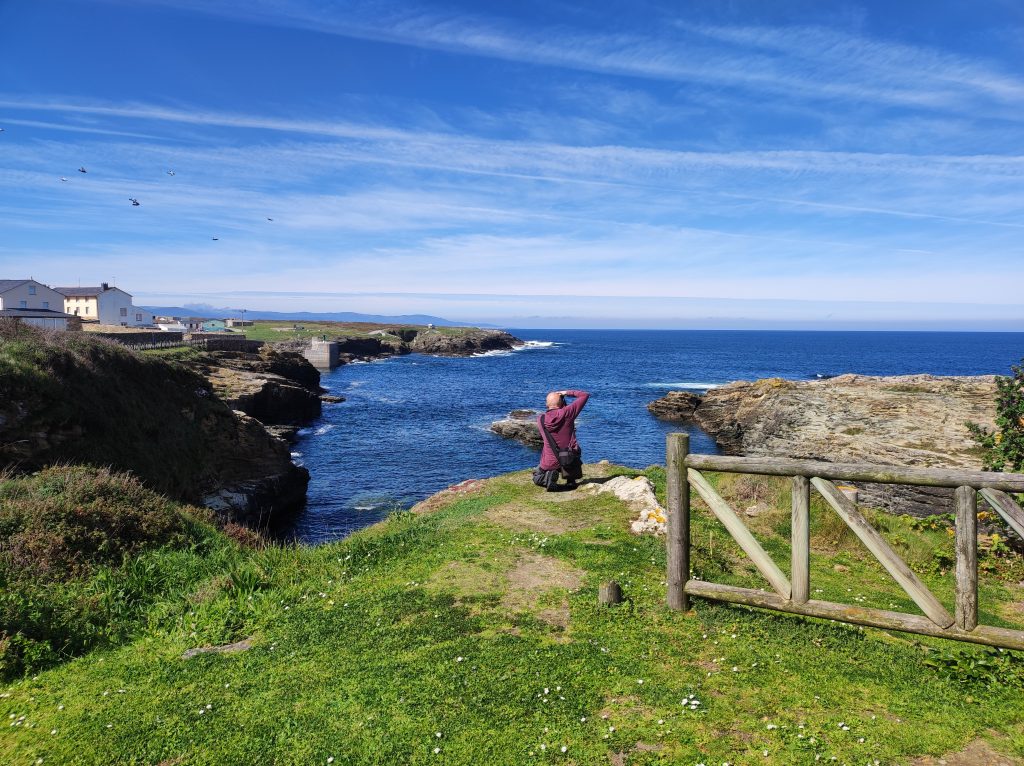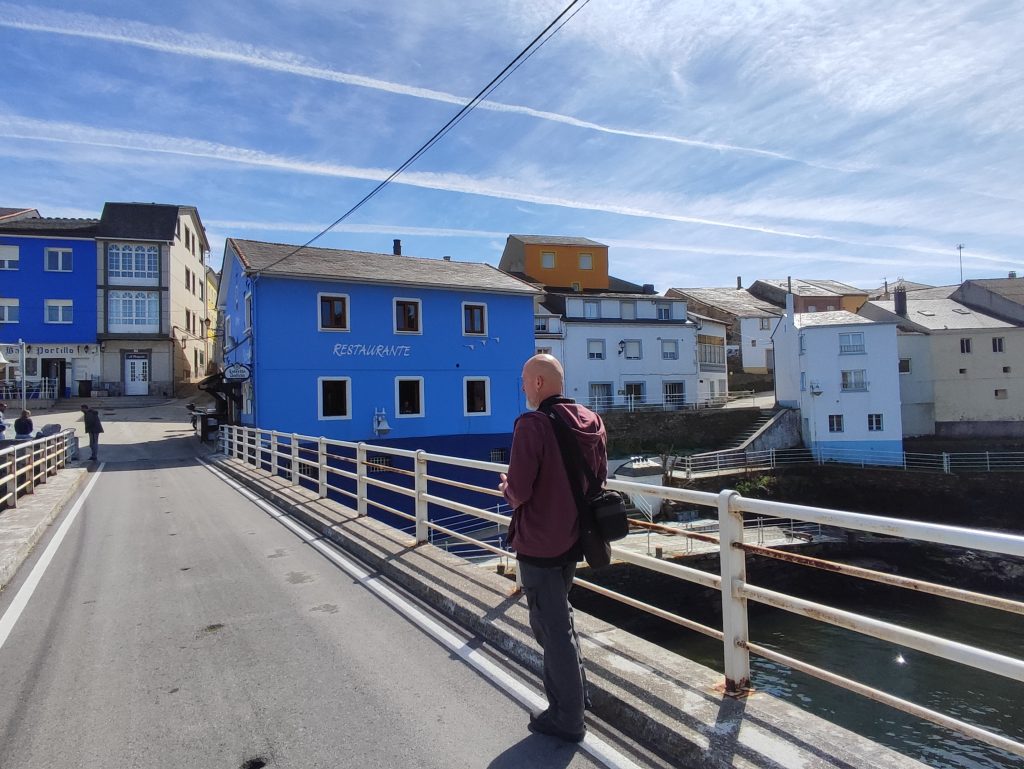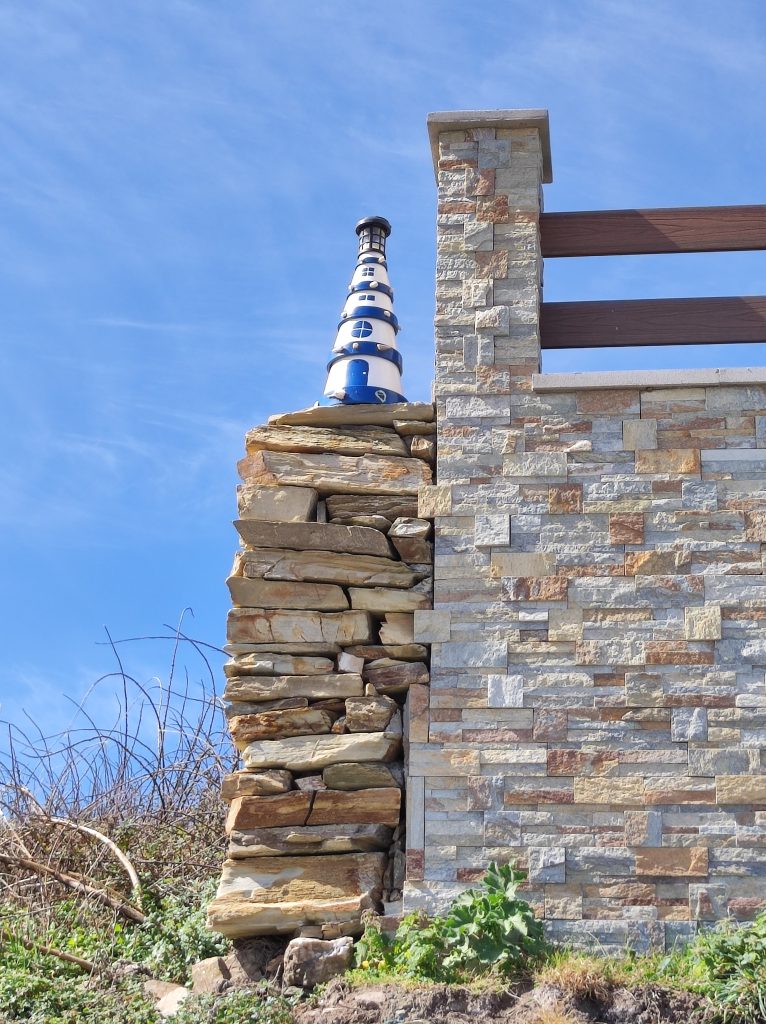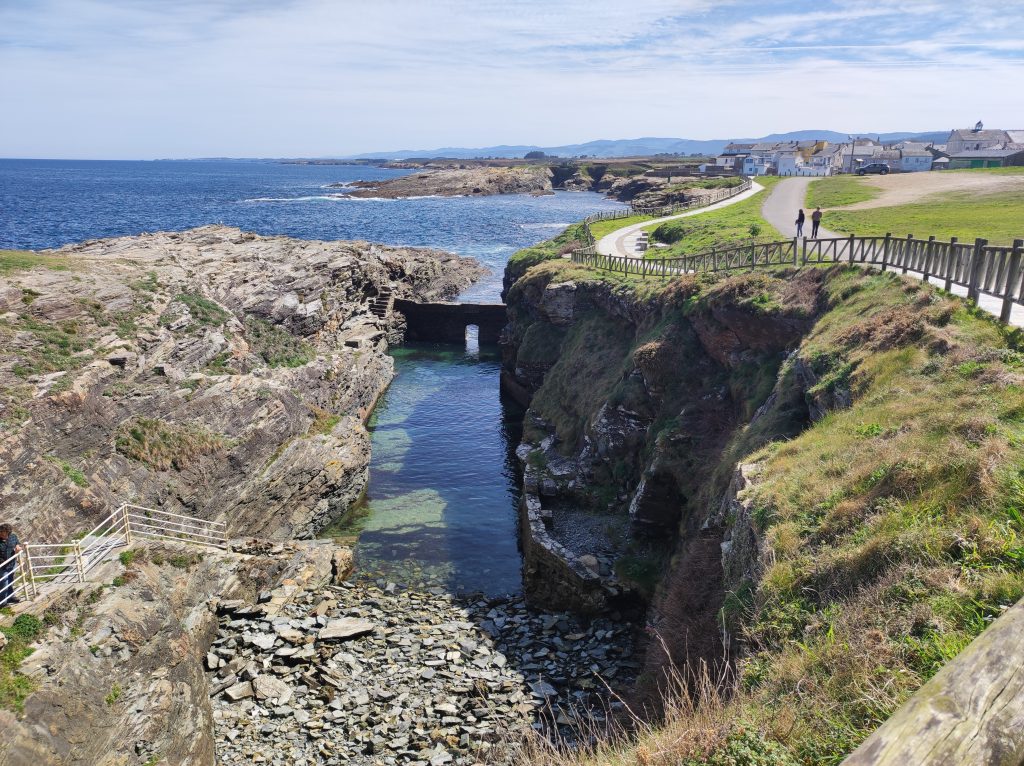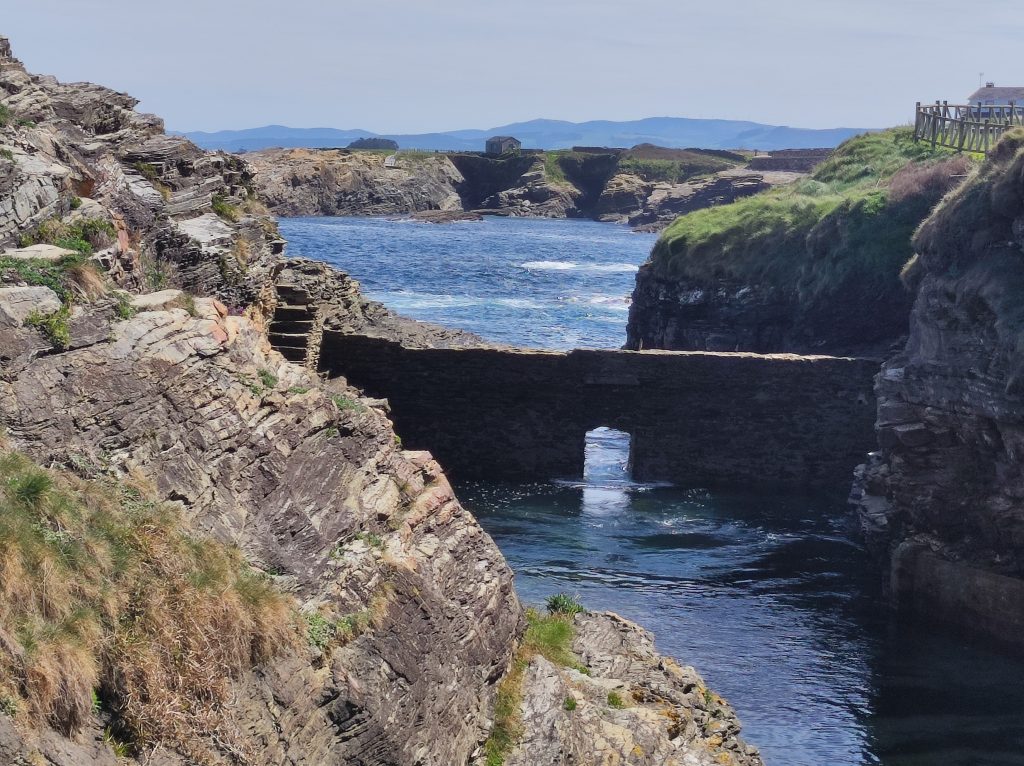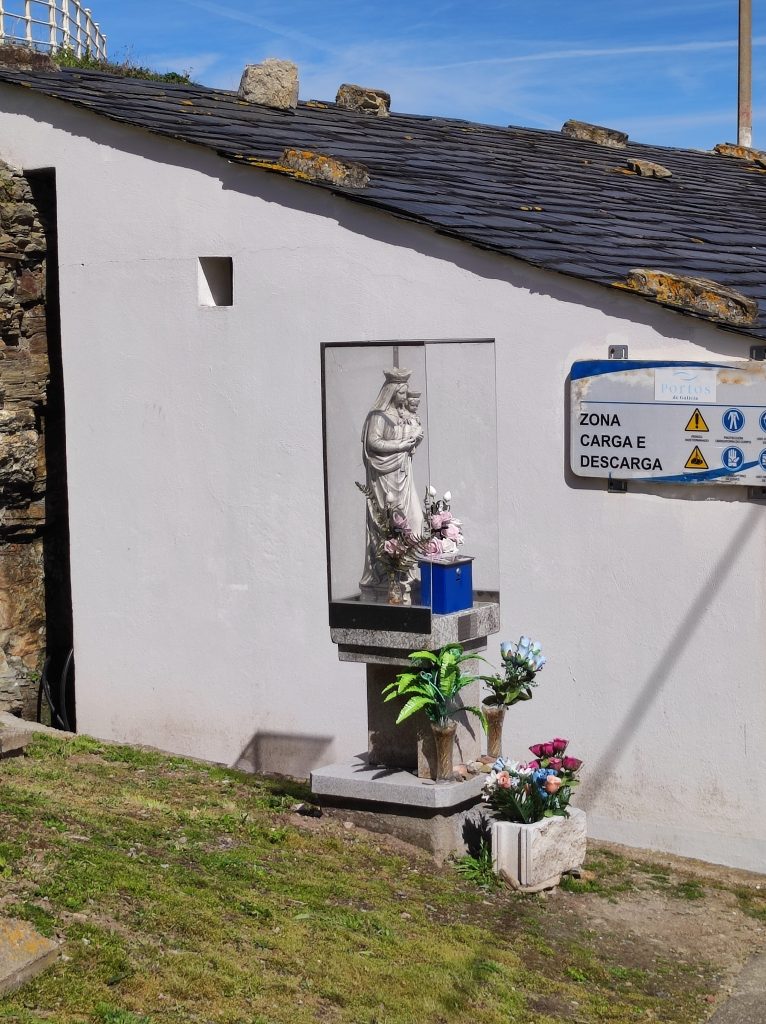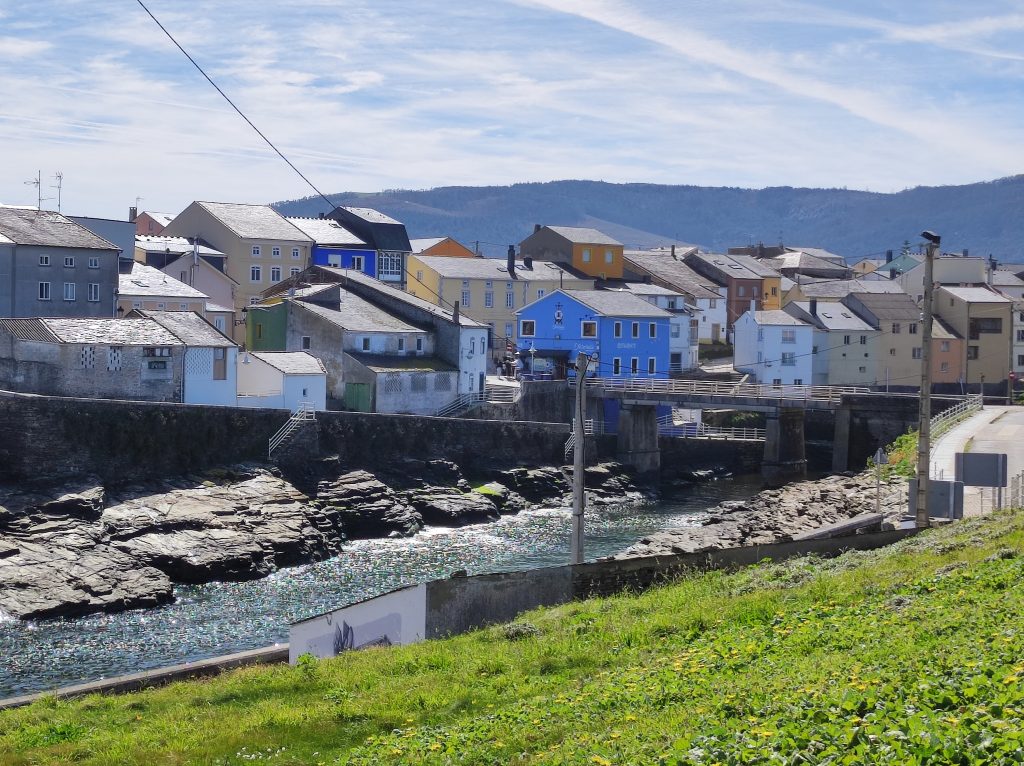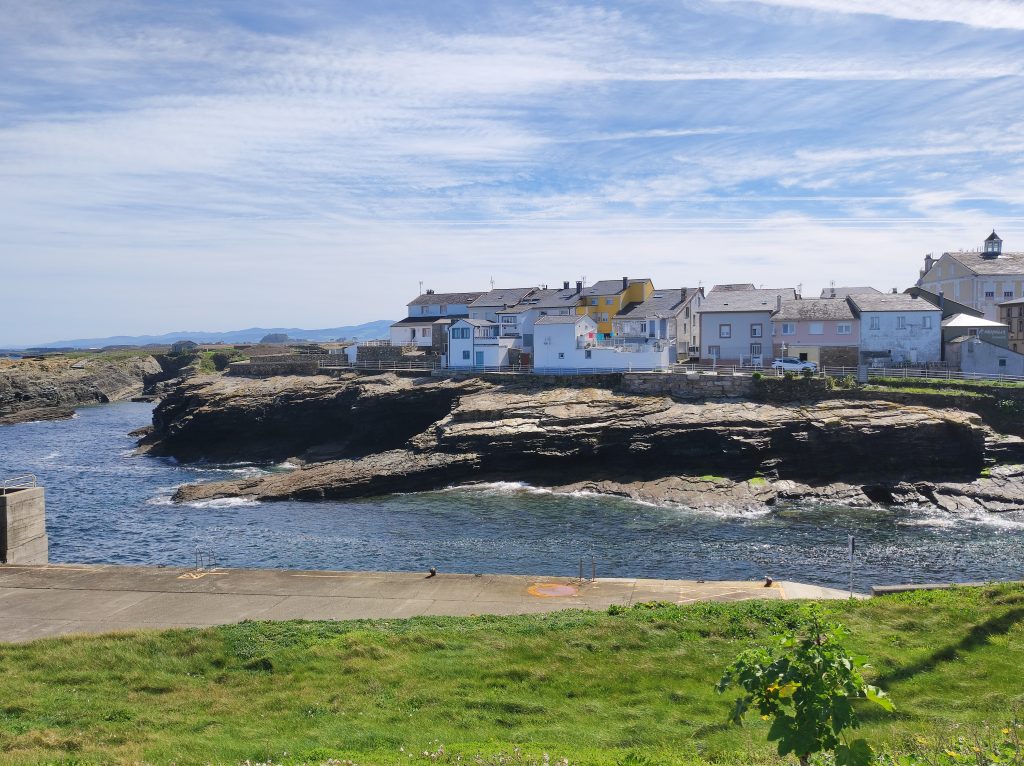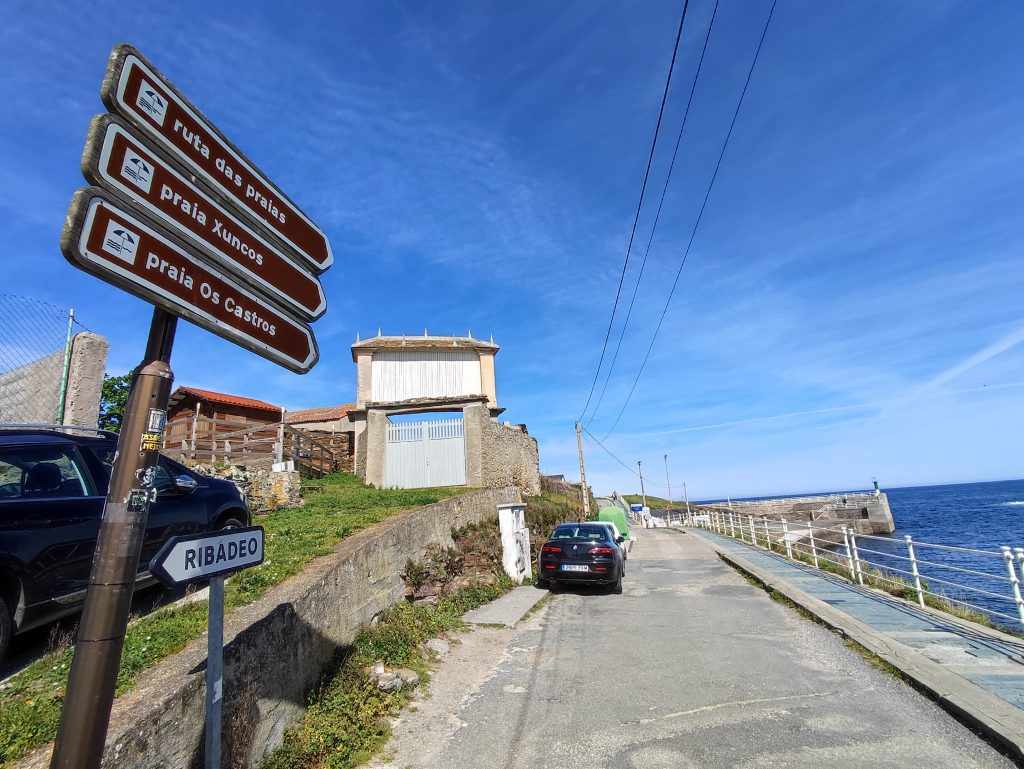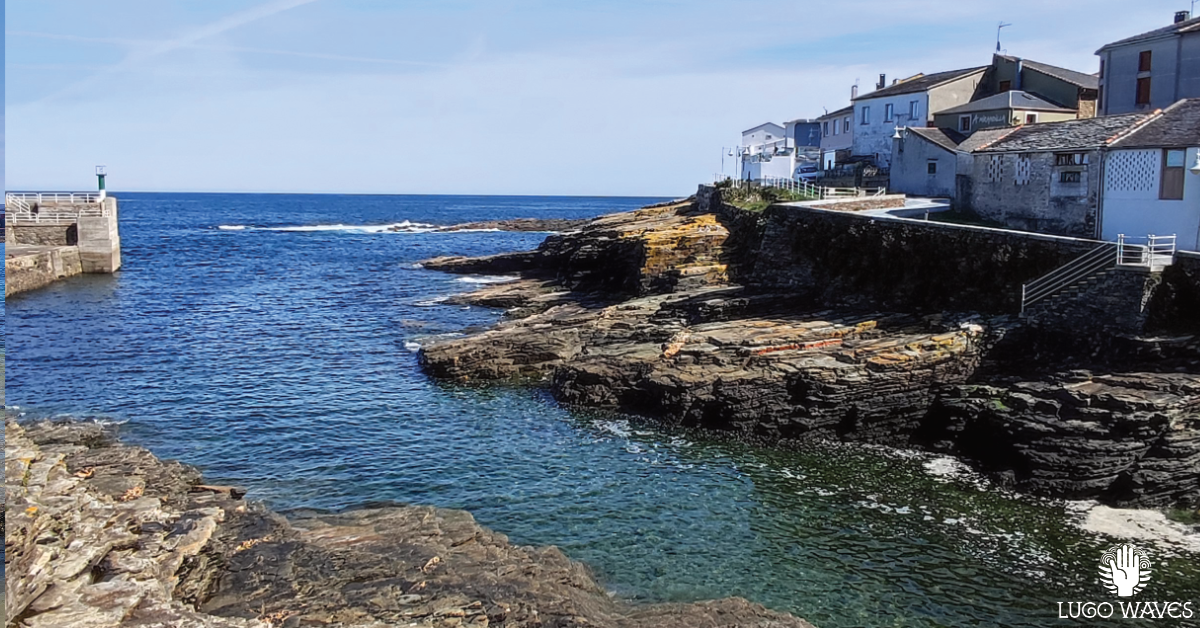If you are spending time in the north of Galicia, then the tiny fishing port of Rinlo is definitely worth a look. Rhinlo is a charming and historic fishing village located in the Ribadeo municipality of the Lugo province of Spain! Rinlo is a must-visit destination for anyone who loves the coast, seafood, and picturesque landscapes.

Why Visit Rinlo
Rinlo is a compact fishing village, with a population of less than 300 people, which hugs the bay of Areosa giving wonderful views across the ocean. With narrow streets and a diverse range of brightly coloured houses built under the slate cliffs, Rinlo is a wonderful place for a wander to breath in the sea air and take in some genuine maritime atmosphere or take a walk/hike along one of the cliff paths.

The village is dotted with huertas (kitchen gardens) which gives nod to the importance of agriculture as well as fishing in the past and there are some interesting examples of horreos too (traditional granaries; see here for more information Horreos of Galicia).

The village was once a whaling port and at the start of the last century started to build shellfish ‘farms’ which although are now abandoned, the ruins make an interesting visit (see below).
Rinlo is about 10km from Ribadeo and close to the Cathedral Beach (Playa de las Catedrales), with easy access for car and public transport.
A selection of restaurants and bars which are famous for their seafood dishes help to give some local flavour (quite literally!).
The village has a long and interesting past stretching back to the medieval era. Once a whaling port, the port is still a working port with fishing boats going in and out of the harbour.
What to Do In Rinlo
Despite its small size, there’s plenty to see and do in Rinlo whether you are looking for somewhere to have a relaxing meal, enjoy a coastal walk or simply soak in the historic maritime atmosphere of the village.
Cetáreas de Rinlo (Shellfish Farms)
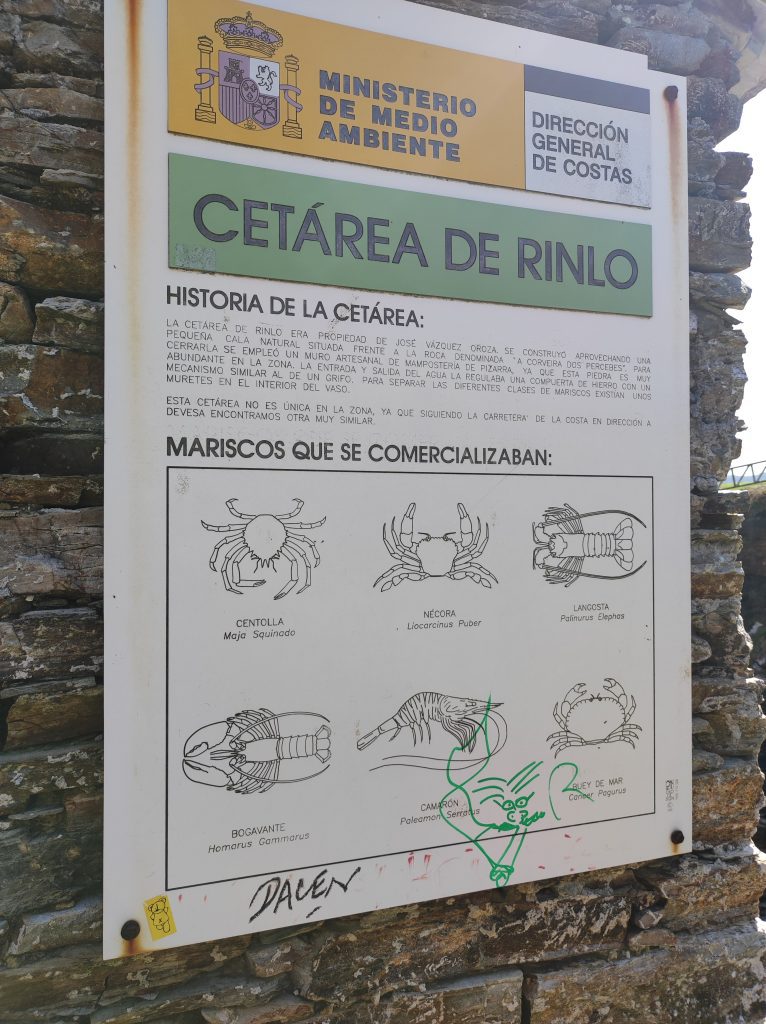
At the start of the last century the first natural cetárea was built. This was built taking into account the natural formation of the rocky inlets and the tides to allow shellfish to be ‘farmed’ in a natural habitat. Walls were built to protect the cetárea with an entrance to allow the sea water to flow in and out. This is a translation of the sign above:
MINISTRY OF ENVIRONMENT
GENERAL DIRECTORATE OF COASTS
RINLO CETÁREA
HISTORY OF THE CETÁREA:
THE CETAREA OF RINLO WAS OWNED BY JOSÉ VÁZQUEZ OROZA AND WAS BUILT TAKING ADVANTAGE OF A SMALL NATURAL CROOK LOCATED IN FRONT OF THE ROCK CALLED THE CORVEIRA DOS PERCEBES. TO ENCLOSE IT, A HANDMADE SLATE MASONRY WALL WAS USED, SINCE THIS STONE IS VERY ABUNDANT IN THE AREA. THE INLET AND OUTLET OF WATER WAS REGULATED BY AN IRON GATE WITH A MECHANISM SIMILAR TO A FAUCET. TO SEPARATE THE DIFFERENT KINDS OF SHELLFISH THERE ARE WALLS INSIDE THE OUTSIDE WALL.
THIS CETÁREA IS NOT THE ONLY ONE IN THE AREA, BECAUSE FOLLOWING THE COASTAL ROAD IN THE DEVESA DIRECTION WE FIND ANOTHER VERY SIMILAR ONE.
SEAFOOD THAT WAS FARMED:
CENTOLLA Maja Squinado
NECORA Liocarcinus Puber
LOBSTER Palinurus Elephas
LOBSTER Homarus Gammarus
SHRIMP Paleamon Serratus
CRAB Cancer PagurusTranslation from the original Galician sign
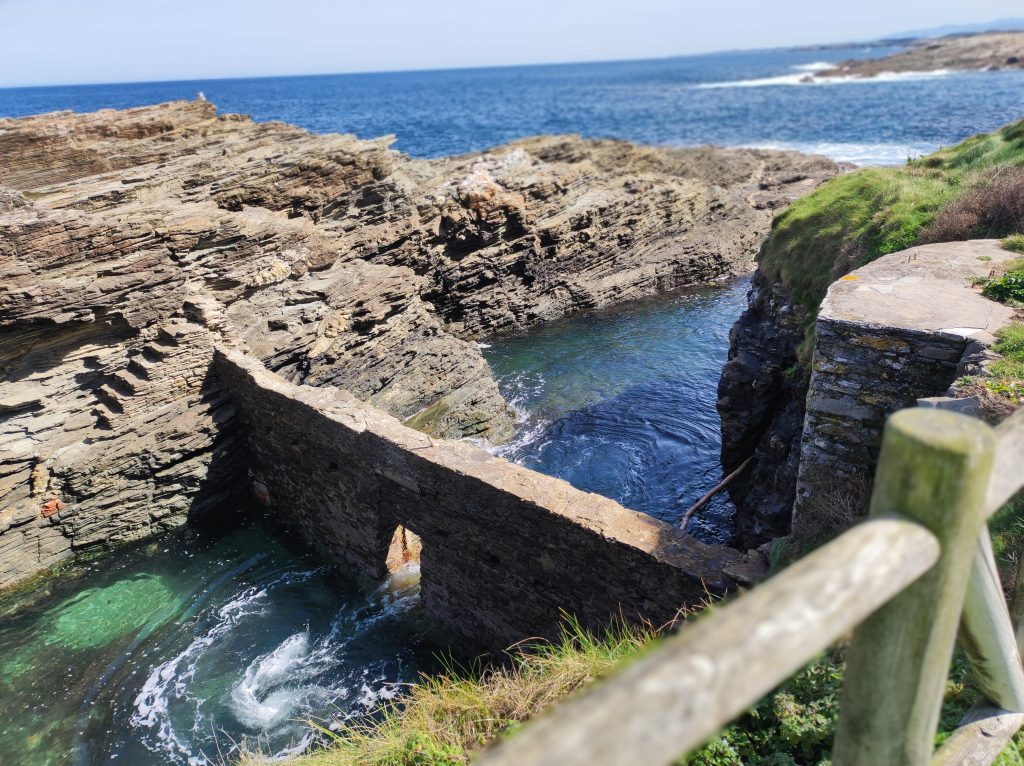
There were three working cetáreas in Rinlo which were operational until the 1990s. Since then, storms and nature have taken their toll and today all we can see is the ruins. The three cetáreas today form the Ruta de Cetáreas and can be visited during an easy walk around the village.
Take a Walk Around the Village
To really get a feel for the village and port, take a wander through the streets and soak in the atmosphere. The port is closed to non-authorized personnel but you can look down on it from the cliff tops on either side of the estuary.
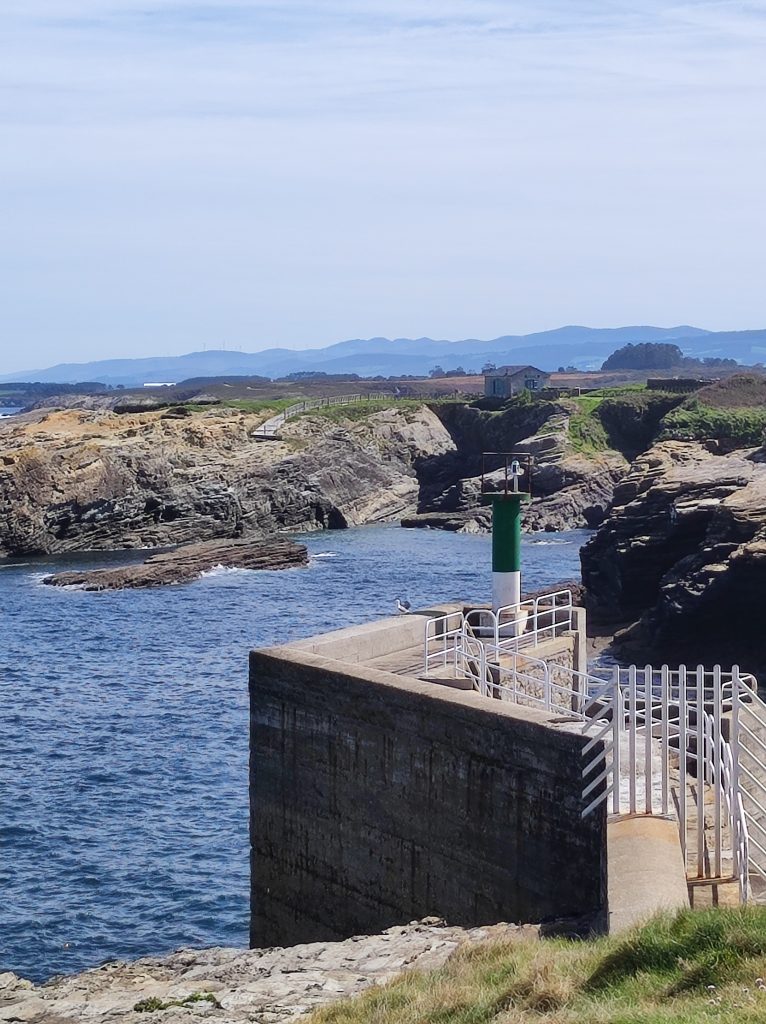
When you walk through the village you will notice the narrow streets which help to shelter the houses from the strong winds and storms. You will also see how the houses have been built, some taller which meant that the fishermen could keep their equipment under the house and some shorter, but with attached buildings for storing equipment.
Also take a look out for the casa de Don Inocencio which is an example of the casas indianas. These are houses built in colonial style from when people had emigrated to south America and returned with wealth which they demonstrated through their houses. The casa de Don Inocencio is part of the ruta de indianos which passes the grand casa indianas in the area.
There are walkways around the village which also link up the cetáreas and also take you to the old village laundry.
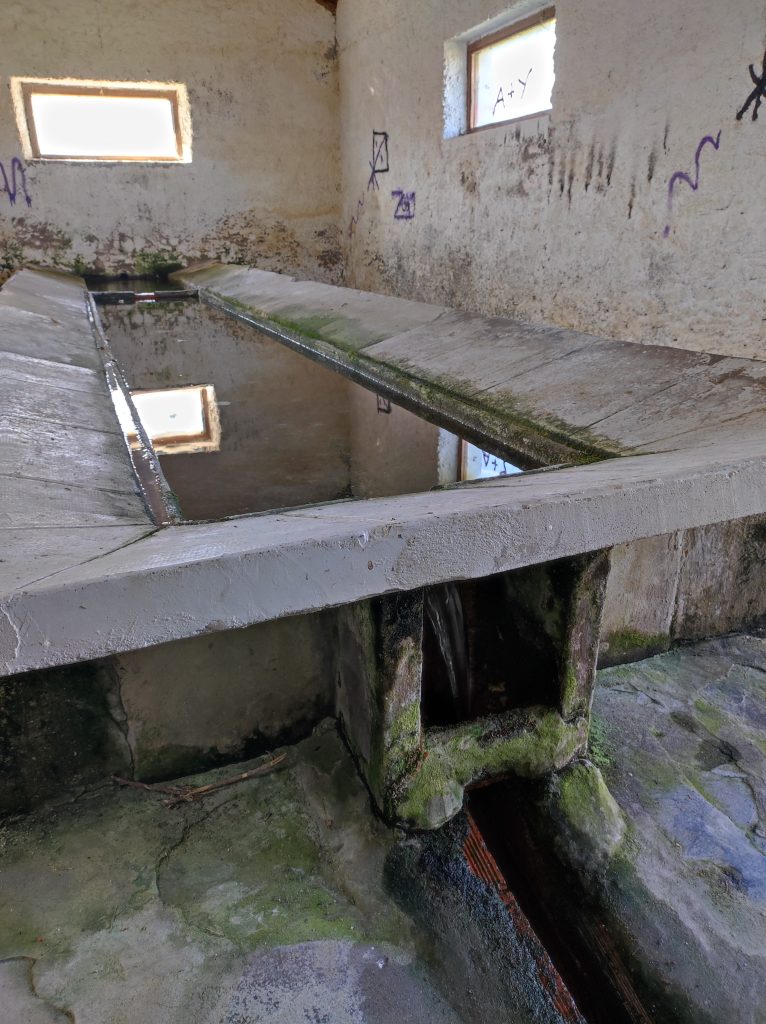
Coastal Paths
Rinlo is on the coastal paths and from here you can walk to the Cathedral beach, Ribadeo, Isla Pancha as well as a variety of beaches.
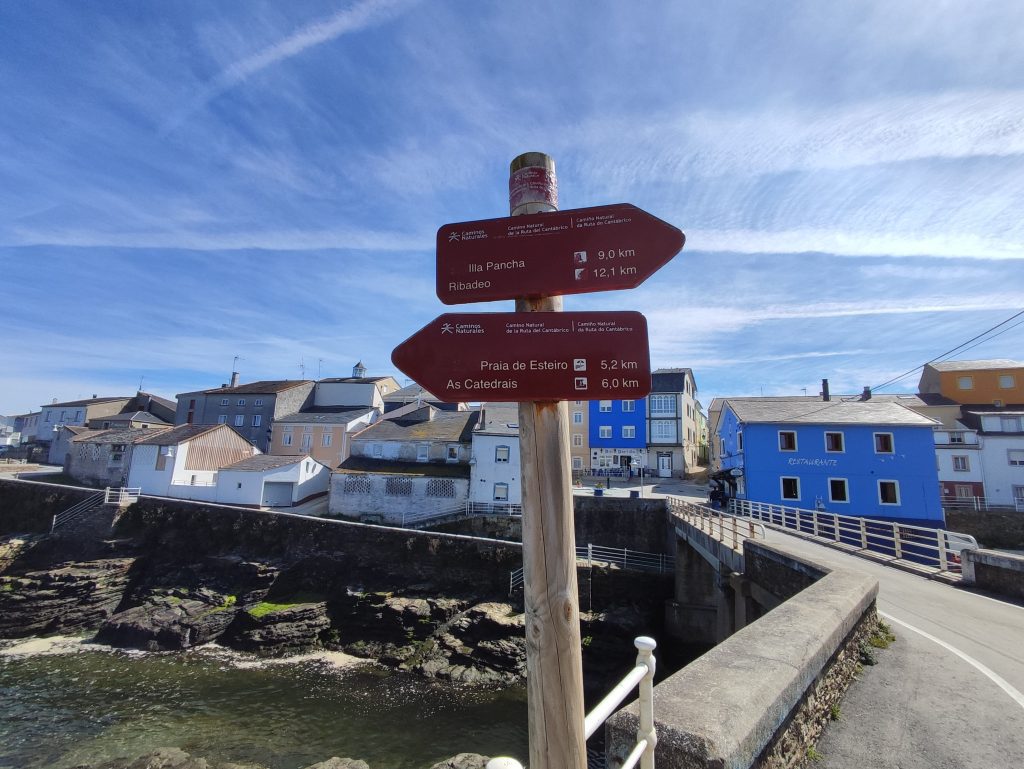
Gastronomy – Soupy Rice
Rinlo is famous for its ‘arroz caldoso’ (soupy rice) this is a lobster rice stew, a typical dish made with rice, fish and seafood broth, and fresh lobster caught in the area. The rice is served very soupy, almost like a soup, and is accompanied by bread and Albariño white wine. It’s a delight for seafood lovers and foodies.
If you want to try this dish, you will find it served in the restaurants in the area, such as A Cofradía, Pulpería Mar de Rinlo, or Casa Lola. All of them are located near the port and have spectacular views of the Cantabrian Sea. The price of lobster rice stew is usually around 25 euros per person, but it’s worth the treat.
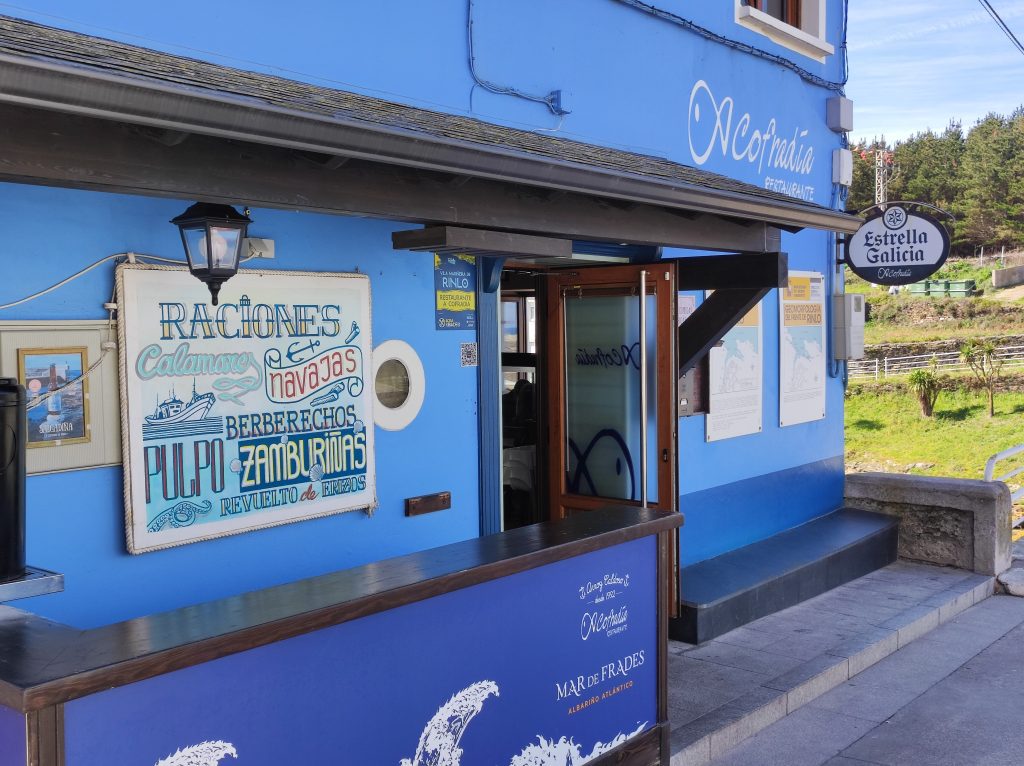
But Rinlo doesn’t only have lobster rice stew. You can also taste other dishes made with local products, such as octopus “a feira” (boiled and seasoned with olive oil, paprika, and salt), grilled or baked scallops, razor clams steamed or with vinaigrette, or boiled goose barnacles (crustaceans that grow on rocks).
For Vegetarians and Vegans: Be aware that Rinlo is famous for its seafood, and be prepared to find little, if any, options for vegetarians/vegans. However, this is a wonderful place for a picnic and you will find picnic tables and benches with awesome views which make a great alternative (I’m vegetarian so I am speaking with experience 😚 ).

Festa do Percebe
The Festa do Percebe (fiesta of the barnacle) of Rinlo is a gastronomic and cultural festival whose protagonist is the barnacle, a crustacean that breeds on the rocks beaten by the sea and has a unique and intense flavor. Rinlo barnacles are prized for their quality and size, and are sold at very affordable prices during the festival. In addition, the festival offers other activities such as live music, children’s games, exhibitions or workshops. The festival is held annually in July or August depending on the tides.
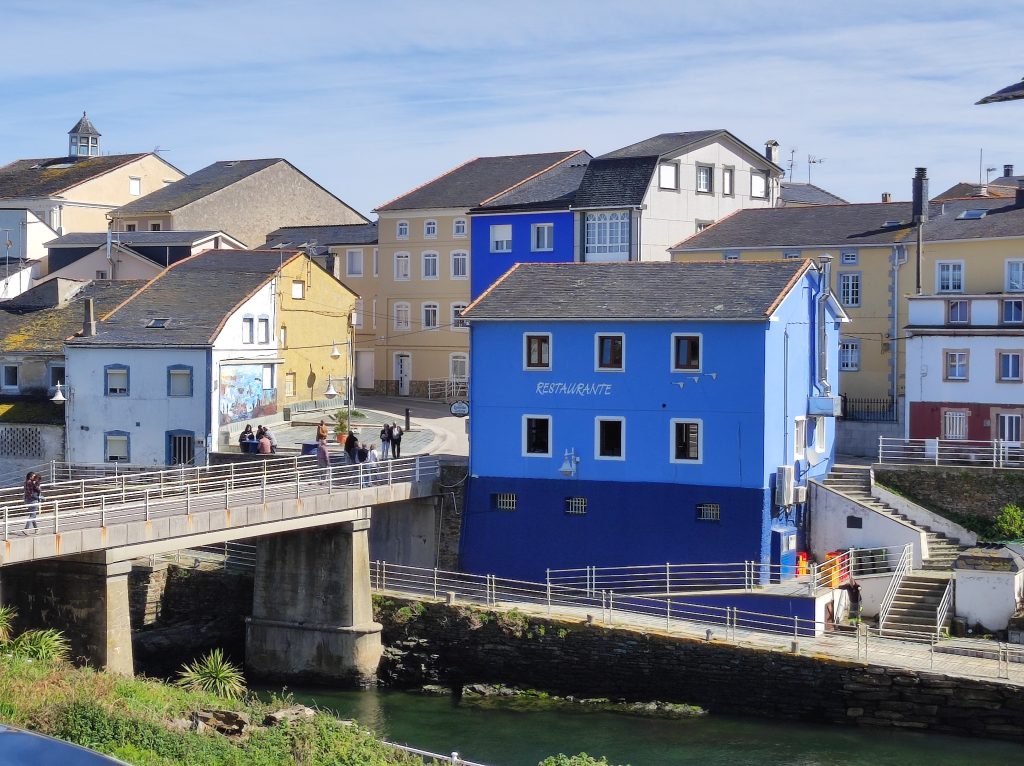
How to Get to Rinlo
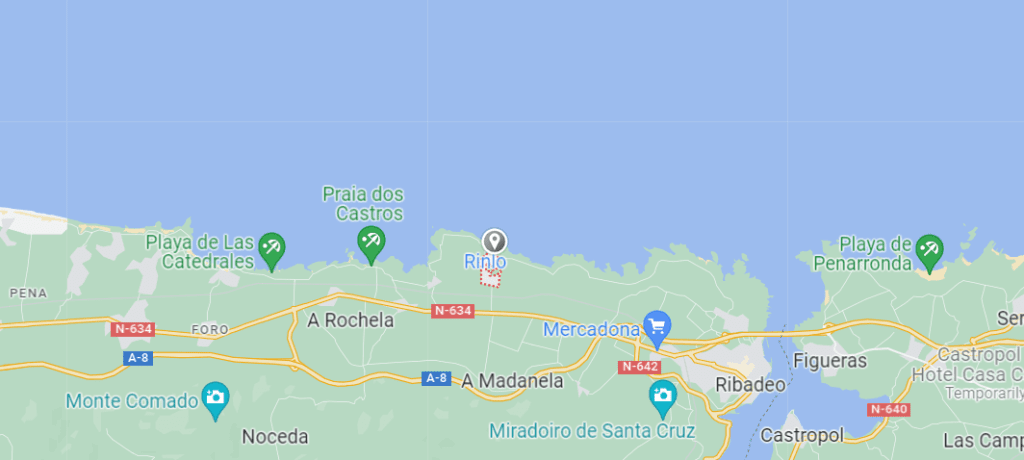
Coordinates
-7.1050888, 43.5554829
By car:
If you come from the south on the A-8, you have to take exit 516 towards Ribadeo and follow the signs to the center. Once in Ribadeo, you have to take the LU-P-6104 road that runs along the coast and will take you directly to Rinlo. The journey from Ribadeo is about 10 minutes and there are several free car parks near the port of Rinlo. If you come from the north on the A-8, you have to take exit 517 towards Barreiros and follow the signs to Reinante. Once in Reinante, you have to take the LU-P-6105 road that also runs along the coast and will take you directly to Rinlo. The drive from Reinante is about 15 minutes and there are also several free car parks near the port of Rinlo.
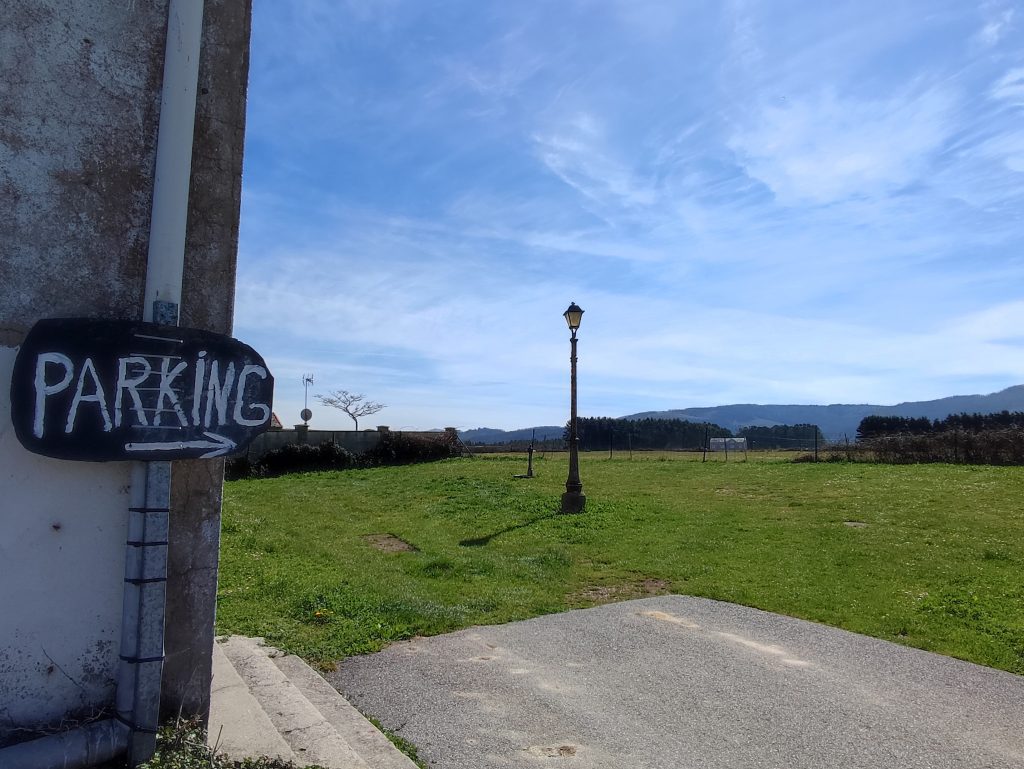
By public transport:
If you do not have a car or prefer to travel in a more sustainable way, you can opt for public transport to get to Rinlo. There are several options: you can take a train to Ribadeo from different cities such as Oviedo, Gijón or Ferrol and then take a bus to Rinlo. The Arriva company has a regular line that connects Ribadeo with Foz, passing through Rinlo every hour approximately. The ticket costs about 2 euros and the journey takes about 15 minutes. You can check the schedules on their website.
If you are travelling from any of the larger cities or towns, if you head to Ribadeo and then take the local bus service to Rinlo.
Walking:
If you like to walk and enjoy the scenery, you can get to Rinlo on foot from Ribadeo or from Reinante following the coastal walk that runs along the entire area at the foot of the Cantabrian Sea. It is a very beautiful and easy route that will allow you to admire the impressive views of the Lugo coast, its cliffs, its beaches and its cetarias (natural pools where lobsters and spider crabs bred). The route is about 12 kilometers long from Ribadeo or about 7 kilometers from Reinante and can be done in about 3 or 2 hours respectively.
What Else to Do When in Rinlo
When you are visiting, don’t forget to check out these other things to see and do!
- Beaches: Although Rinlo does not have its own beach, it is very close to some of the best beaches in Galicia. Just 4 km away is the As Catedrais beach, declared a Natural Monument for its impressive arches and caves formed by the erosion of the sea. It is necessary to book in advance to access it during the summer months. Other nearby beaches are Os Castros, Illas or Esteiro.
- Hiking: Rinlo is an ideal starting point for hiking along the coast or inland. One option is to follow the Camino Natural del Cantábrico, which runs along cliffs, beaches and forests from Ribadeo to Viveiro. Another option is take the hike towards Santiago de Compostela passing through places like Lourenzá or Mondoñedo.
- Get to know Ribadeo: Just 8 km from Rinlo is Ribadeo, the capital of the municipality and a town with a lot of charm and history. You can walk through its historic center declared a Historic-Artistic Site and admire its emblematic buildings such as the Town Hall, the Torre dos Moreno or the Pazo dos Merás. You can also visit its marina and commercial port or go up to the viewpoint of Monte Santa Cruz to enjoy panoramic views.
Rinlo is a hidden gem on the northern coast of Galicia, offering delicious cuisine, stunning landscapes, and rich cultural heritage. From the famous arroz caldoso con bogavante to other seafood delicacies, the town’s gastronomy will delight any food lover. Meanwhile, its historic center, fishing port, and lighthouse offer a glimpse into the traditional maritime lifestyle of the region. And let’s not forget the breathtaking beach of As Catedrais, with its majestic rock formations. So if you’re planning a trip to Galicia, make sure to include Rinlo and Ribadeo in your itinerary. You won’t regret it!
Rinlo Photo Gallery
